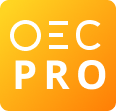Overview This page contains the latest trade data of Calendering or rolling machines, not. for metals/glas. In 2023, Calendering or rolling machines, not. for metals/glas were the world's 2262nd most traded product, with a total trade of $876M. Between 2022 and 2023 the exports of Calendering or rolling machines, not. for metals/glas decreased by -23.6%, from $1.15B to $876M. Trade in Calendering or rolling machines, not. for metals/glas represent 0.0039% of total world trade.
Calendering or rolling machines, not. for metals/glas are a part of Rolling Machines.
Exports In 2023 the top exporters of Calendering or rolling machines, not. for metals/glas were China ($181M), Italy ($155M), Japan ($117M), South Korea ($109M), and Chinese Taipei ($59.6M).
Imports In 2023 the top importers of Calendering or rolling machines, not. for metals/glas were China ($209M), United States ($133M), Chinese Taipei ($33.8M), Vietnam ($26.7M), and India ($26.4M).
Ranking Calendering or rolling machines, not. for metals/glas ranks 73rd in the Product Complexity Index (PCI).
Description Rolling mills are used in the production of sheet metal, such as steel or aluminum, into thinner sheets. The rolling mill consists of three parts: the rolls, the stand, and the bed. The rolls are two long cylindrical pieces of metal that are firmly attached to a stand. The bed is a flat surface on which the metal is placed. As the rolls rotate, they push the metal flat, squeezing it out between the rolls.

